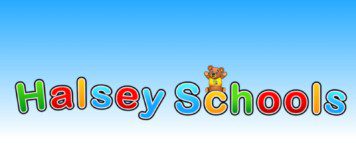Repetition and Extension Language Stimulation Techniques
Repetition and Extension are language stimulation techniques that teachers and mommies and daddies like you can use to keep conversations with children going. They can also increase your child’s vocabulary.
How to use repetition to increase your child’s vocabulary
Listen to what your child says and then restate or rephrase your child’s words. Listen to your child, then use your child’s words in a more complete phrase or sentence.
Your child says: Car goes fast.
You say: Yes, your car is going very fast.
Your child says: Painting the box.
You say: Oh, you’re painting the box blue.
Your child says: That her dolly.
You say: That is her dolly!
How to use extension to increase your child’s vocabulary and continue the conversation
Expand your child’s phrase or sentence, and then add another sentence on the same topic to extend the conversation further.
Your child says: Car goes fast.
You say: Yes, your car is going very fast. It’s coming around the table.
Your child says: Painting the box.
You say: Oh, you’re painting the box blue. It’s a good box for your rocks.
Your child says: That her dolly.
You say: Yes, that is Miya’s dolly. She looks like she is hungry.
Using Repetition and Extension helps to keep conversations going by focusing on your child’s language.
Listen carefully to what your child is saying and respond by expanding your child’s words into more complete phrases or sentences. Your child determines the topic. You follow the lead, adding more content to the conversation, new vocabulary, and new sentence structures.
The success of Repetition and Extension depends on your ability to understand not only your child’s words, but also her/his intent. And to add interesting information.
Conversations that are not child‐centered usually end prematurely, while child‐centered expansions lead to increased conversation.
| Your Child says: | Your Child Centered Repetitive and Extended Response: | Don’t just say: |
|---|---|---|
| New shoes. | Wow, you do have new shoes! I’ll bet you can run really fast in them. What color are they? | Oh, you have on new shoes. |
| Truck Broke. | Yes, the truck is broken. The gas station where they fix trucks is open. Someone should have been more careful. | Oh no! The truck is broken! |
| New shoes. | Wow, you do have new shoes! I’ll bet you can run really fast in them. What color are they? | Oh, you have on new shoes. |
| Birthday Cake. | Here’s your birthday cake! Happy birthday to you! I love to eat birthday cake. What shape is it? | Oh, a birthday cake. How nice. |
Adapted from LAUP: Notari-Syverson, Angela, O’Connor, Rollanda, & Vadsay, Patricia F. (2001) Ladders to Literacy, Paul H. Brookes Publishing Co, Baltimore, MD. Pianta, Robert C,, La aro, Karen M., & Hamre, Bridget K. (2008) Classroom Assessment Scoring System Manual Pre-K, Paul H. Brookes Publishing Co, Baltimore, MD. Sharp, Carrie (1987) Now You’re Talking: Techniques that Extend Conversations Facilitators Guide, Educational Productions, Inc. Portland, OR
- Happy Times November 2024 - October 29, 2024
- Ms. Tiffany - September 27, 2024
- Happy Times October 2024 - September 27, 2024




